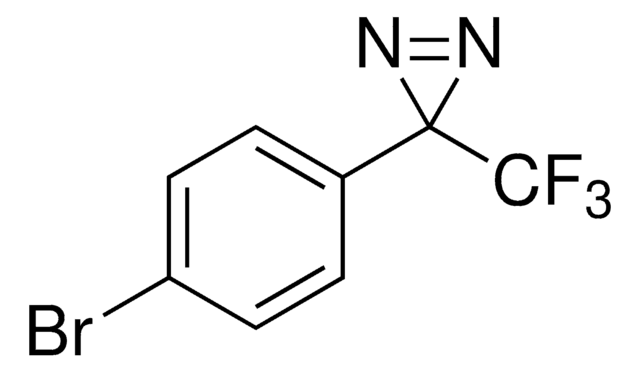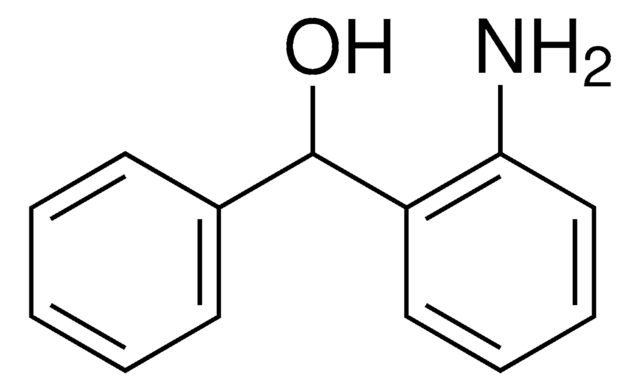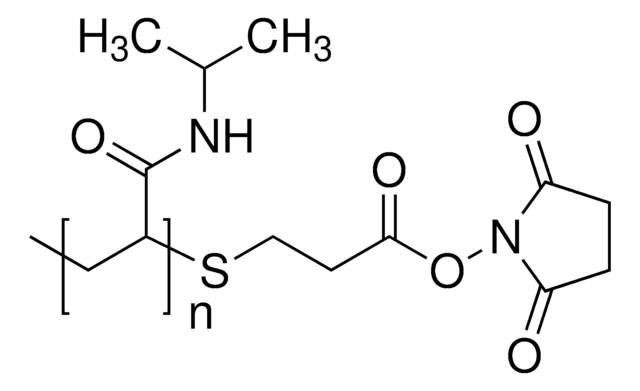803340
Sulfo-SDA (Sulfo-NHS-Diazirine) (sulfosuccinimidyl 4,4′-azipentanoate)
About This Item
Recommended Products
Assay
≥90%
Quality Level
form
powder
mol wt
327.25
reaction suitability
reagent type: cross-linking reagent
storage condition
desiccated
solubility
water: soluble
shipped in
ambient
storage temp.
2-8°C
SMILES string
O=C(C(S(=O)([O-])=O)C1)N(OC(CCC2(N=N2)C)=O)C1=O.[Na+]
InChI
1S/C9H11N3O7S.Na/c1-9(10-11-9)3-2-7(14)19-12-6(13)4-5(8(12)15)20(16,17)18;/h5H,2-4H2,1H3,(H,16,17,18);/q;+1/p-1
InChI key
KTYCFZFVXSHAGH-UHFFFAOYSA-M
Related Categories
General description
Features and Benefits
- Water soluble—solubility in aqueous solutions improved by a sulfonate group
- Heterobifunctional—NHS ester group reacts with primary amines at pH 7 to 9 to form covalent amide bonds; diazirine (azipentanoate) group reacts efficiently with any amino acid side chain or peptide backbone upon activation with long-wave UV light (330-370 nm)
- Controllable—two-step chemical crosslinking is activated using common laboratory UV lamps
- Easy to use—these crosslinkers are photo-stable under typical laboratory lighting conditions so there is no need to perform experiments in the dark
- Better than aryl azides—the diazirine photoreactive group has better photostability in normal light than phenyl azide groups of traditional photoreactive crosslinkers, yet the diazirine group is more efficiently activated by long-wave UV light
Caution
related product
Storage Class Code
11 - Combustible Solids
WGK
WGK 3
Flash Point(F)
Not applicable
Flash Point(C)
Not applicable
Regulatory Listings
Regulatory Listings are mainly provided for chemical products. Only limited information can be provided here for non-chemical products. No entry means none of the components are listed. It is the user’s obligation to ensure the safe and legal use of the product.
JAN Code
803340-50MG:
Choose from one of the most recent versions:
Certificates of Analysis (COA)
Don't see the Right Version?
If you require a particular version, you can look up a specific certificate by the Lot or Batch number.
Already Own This Product?
Find documentation for the products that you have recently purchased in the Document Library.
Customers Also Viewed
Our team of scientists has experience in all areas of research including Life Science, Material Science, Chemical Synthesis, Chromatography, Analytical and many others.
Contact Technical Service











